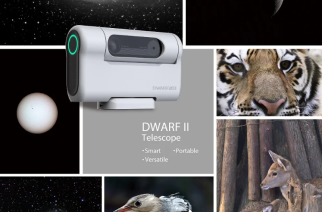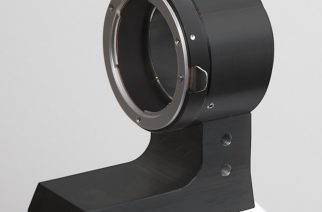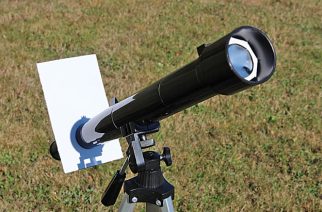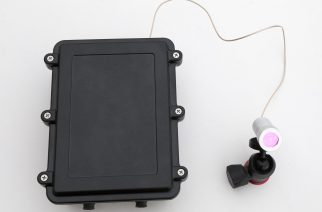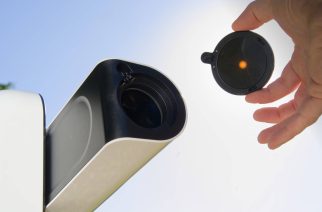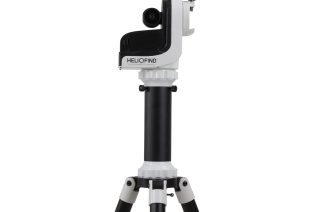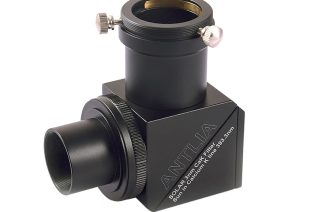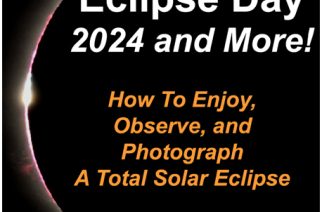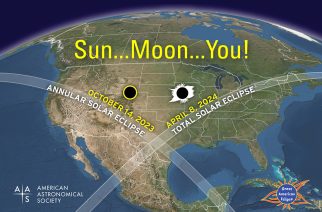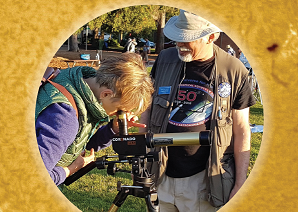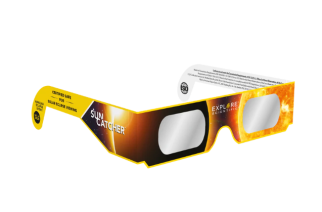Using the DWARF II Telescope for solar imaging is just one of the opportunities available with the new DWARF II smart telescope. Joining the growing list of robotic telescopes using smart technology, it is a compact telescope controlled by your smartphone under the control of the DWARFLAB App and is […]
Author: Stuart Parkerson
QUARK Camera Adapter for Nikon
The DayStar Filters QUARK Camera Adapter for Nikon connects your Daystar QUARK solar filter to an ordinary Nikon style SLR lens, turning it into a Hydrogen Alpha Solar Telescope. The adapter can be used with a camera or an eyepiece or any Quark/telescope industry accessories. You can use the zoom […]
Galileoscope Solar Kit
The team behind the Galileoscope telescope project is working with Explore Scientific to create a Galileoscope Solar Kit that includes a safe solar filter and sunshade. The Galileoscope is a wonderful telescope for observing solar eclipses – and for observing sunspots on any sunny day (and the Moon, planets, and […]
Continuous Solar Seeing Measurement System
Alcor-System has recently introduced a Continuous Solar Seeing Measurement System (CSSMS). The idea behind the CSSM is to measure the Sun’s scintillation and compute seeing figure equivalents. It can be combined with all of Alcor-System’s Sky cameras and nighttime seeing monitors. Turbulence (or seeing) is a great concern when recording […]
Solar Snap
Solar Snap is a new solar eclipse smart phone solar filter that that was developed by former Hubble Space Telescope Astronomer, Dr. Doug Duncan. The Solar Snap kit includes solar eclipse-viewing lenses designed specifically for use with smartphones along with the Solar Snap app offered in an iOS version on […]
Vespera Solar Filter
The Vespera Solar Filter adds to the versatility of the Vespera observing station by providing the ability to observe the Sun. The filter allows you to observe sunspots that show the intensity of the Sun’s activity. When using the Vespera Solar Filter with Vespera’s Solar Mode you can observe the […]
Sky-Watcher SolarQuest Mount
The Sky-Watcher SolarQuest Mount will be the subject this week on the Sky-Watcher What’s Up? Webcast. The Sky-Watcher team will take a deep dive into the Sky-Watcher SolarQuest which automatically aligns and tracks the sun without any alignment needed. It is perfect for outreach, eclipses and just general observing of […]
Antlia Solar Wedge
The Antlia Solar Wedge offers a Herschel Wedge design which replaces the standard prism diagonal at the rear of refractor telescopes to enable imaging of solar granulation and sunspots. The Herschel Wedge design is well known to give sharper, higher-contrast images while transmitting a greatly reduced, safe amount of light […]
Solar Eclipse Convection Clouds
A new video demonstrating solar eclipse convection clouds has been released by Gordon Telepun, the publisher of the Solar Eclipse Timer App and a new e-book titled “Eclipse Day – 2024 and More! How to enjoy, observe and photograph a total solar eclipse.” This video overlays a special colorized GOES […]
AAS Solar Eclipse Task Force
In 2014 the American Astronomical Society (AAS) created the AAS Solar Eclipse Task Force to help coordinate national preparations for the “Great American Eclipse” of August 21, 2017. The task force, meant to function as a think tank, coordinating body, and communication gateway/hub, was composed of professional and amateur astronomers, […]
Solar Observer’s Handbook
The Solar Observer’s Handbook is for the casual backyard astronomer whose been thinking of doing solar observing but needs to know how to do so safely. This guided tour will help you to learn the basics of viewing the closest star to Earth and protect your eyesight while doing so. […]
Sun Catcher Solar Eclipse Glasses
With the new Explore Scientific Sun Catcher Solar Eclipse Glasses you can be ready for the annular solar eclipse on October 14th, 2023 and the April 8, 2024 total solar eclipse. As many people learned, in the weeks approaching the 2017 total solar eclipse, solar safe glasses were in short […]


